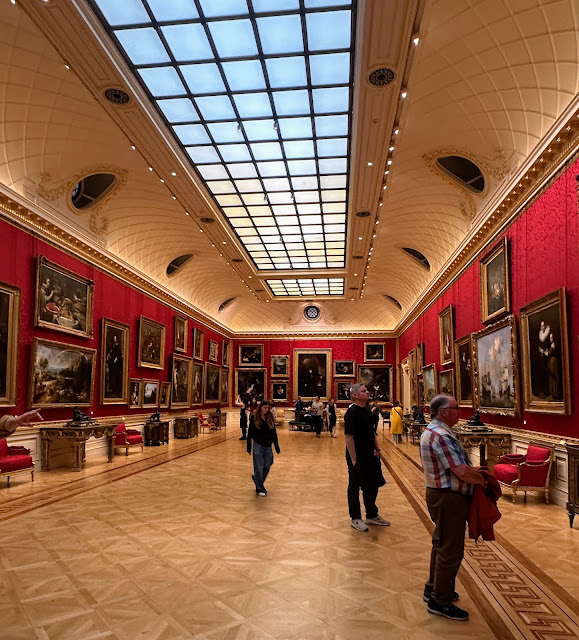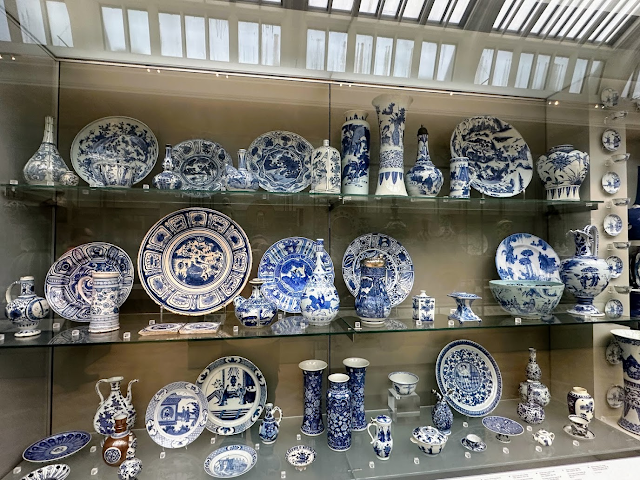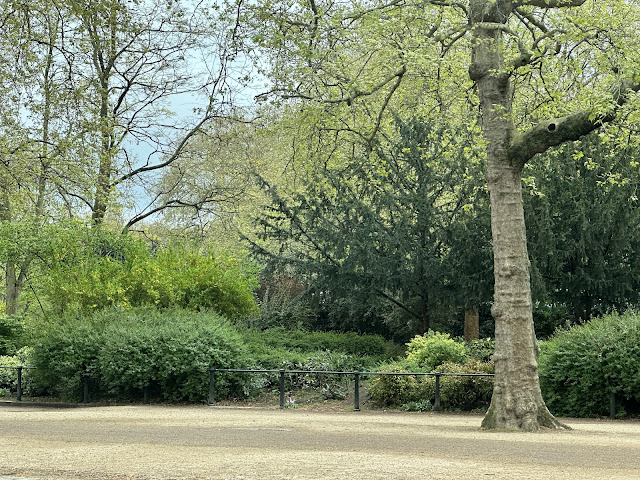I know everyone is sick of blogs about my trip, so you can all silently cheer this is the LAST ONE! We flew from Athens to London for a final five days of vacay in London. Our focus was museum oriented. [Aside: Well, that's a big surprise isn't it?]
The trip to Athens and seeing the Parthenon made us start our London museum exploration at The British Museum to see the Elgin Marbles and other odds and ends the British helped themselves to in Greece at the beginning of the 19th century. Lord Elgin set the precedent by getting the government out of Constantinople, which was ruling Greece at the time, to agree he could take anything carved or sculpted. He took anything he wanted and packed it off to England - thus "The Elgin Marbles". He immediately helped himself to the only intact column sculpture left standing at the Parthenon. [Full disclosure: The Parthenon was shattered when a Venetian artillery shell exploded an Ottoman powder magazine inside the Parthenon during a war between the Ottomans and the Doge of Venice] Since the British considered themselves to be superior to other nationalities, Lord Elgin undoubtedly thought of himself as a preserver and protector of these antiquities.
 | ||
| These friezes went all around a huge room In addition to the sculptures picked up around the Parthenon, the British brought back entire tombs and other sculptures from the zenith of ancient Greek culture I also loved the animal sculptures I went so crazy taking pictures at the British Museum, that I actually depleted my iphone battery to less than 5%. I had to borrow Drake's phone to take my outside pictures of Trafalgar Square. The British Museum is one of the cornerstones of Trafalgar in London than we anticipated. This is overlooking Trafalgar Square
 The guy standing on top of the column is Lord Nelson, the Admiral in command of the sea battle at Trafalgar. He died during the battle If you want to see the pictures from the British Museum, click on the link. I will admit I got carried away. And, if you think I got carried away at The British Museum, I went nuts in the National Gallery of Art. Wonderful pictures from Medieval times forward. Vermeer: There were three hanging Vermeer's including this one. Drake and I really like 16th century Dutch paintings such as Jan Steen painting not religious scenes, but rather pictures of the common people doing ordinary things. As Protestantism surged, commissions from the largely Catholic rulers dried up for the Dutch. Here's an example of Jan Steen entitled "The Effects of Intemperance". The other subject the Dutch loved was 'the sea'. Considering the geography of The Netherlands, I'd be amazed if they didn't love sea pictures. Here's an example from Jacob van Ruisdael. This is also the time of Rembrandt, and the National Gallery had some wonderful pictures. I did take a photo of his most famous self portrait, but it was this picture which caught my eye. Rembrandt illustrated a story from the Bible concerning Balthazar and the mysterious writing on the wall. I especially like the startled looks when the writing appears on the wall. If you like 'flower pictures', here's one painted by a female artist. Not only was it hard for a woman with artistic talent to obtain training, but women of a certain class were expected to stay home. Thus, most pictures by female artists were restricted to what they could observe inside their houses. Rachael Ruycha definitely had talent. There were Gainsborough's, Reynolds', Sargent's, El Greco's, Constable's and Velazquez paintings. I could go on and on - but you can see as many or as few as you would like by clicking on my photo link: I found another museum which was filled with two hundred years of 'collecting' by one aristocratic family whose fortunes were buoyed through marriage to an American heiress. This museum is called "The Wallace Collection", and it was chock full of furniture, chandeliers, knick-knacks, clocks, sculpture, and paintings. Lord Wallace's museum displayed in his London home was the inspiration for Henry Frick to display his own collection. Somehow, Lord Wallace managed to obtain the quintessential painting of the Rococo period - that time of excess just prior to the French revolution at the end of the 18th century. It's called "The Swing" Every room in this multi floor mansion in the heart of London is decorated within an inch of it's life. Then, there are other rooms filled with weapons and an armor clad knight mounted on his armor clad horse. At this point, I wondered what else could possibly in this museum. The second floor was a gallery of salon hung paintings by Reubens, Murillo, El Greco, Rembrandt, and Velazquez. If you love beautiful porcelain, fabulous furniture, lovely paintings, miniatures, and ornate knick-knacks, you will love my pictures of The Wallace Collection. By this time you'd think I'd be finished with art museums, but there were two more which captured our fancy. The first was Tate Britain. This is basically a collection of famous painting by mostly British artists. We were really lucky to see an exhibition of Constable paintings. Constable was beloved during his lifetime together with Turner. Here's one of my favorite Constable paintings. He loved the theme of Man vs Nature. Here's a Turner painting called "The Field at Waterloo". The carnage at Waterloo was as extreme as some of the American Civil War battles. Entire villages flocked to see the casualty lists printed and posted by their local newspapers. In Turner's picture there are bodies piled on bodies as far as you can see. As well as gorgeous paintings, the Tate Britain is a beautiful building. If you're interested in classic British art, click on the picture link. The final museum in London was The Victoria and Albert. This is a museum of 19th century curiosities. It contains a mish/mash of art. I especially liked the porcelain collection. I went a little nuts in this area. Here's an example: https://photos.app.goo.gl/Edzh6ndrRh464nfV6 We enjoyed tooling around Central London in the traditional black cabs. It takes cab drivers an average of two years to master "The Knowledge" - knowing every road in London. A London cab driver doesn't use GPS, he uses "The Knowledge". You give him an address or even a building, and he drives right to it. We did most of our building/fountain/sculpture viewing from the cabs, 2/3rds of which are now electric hybrids. Churchill in front of Parliament The Queen's Park - they mean Victoria. There's another collection of pictures similar to the above: The final photo album is a collection of flowers and landscapes in both the Mediterranean and in London of all the pictures I took on this trip, this one, the sunset at sea, is fitting for the end of this entry. |











































